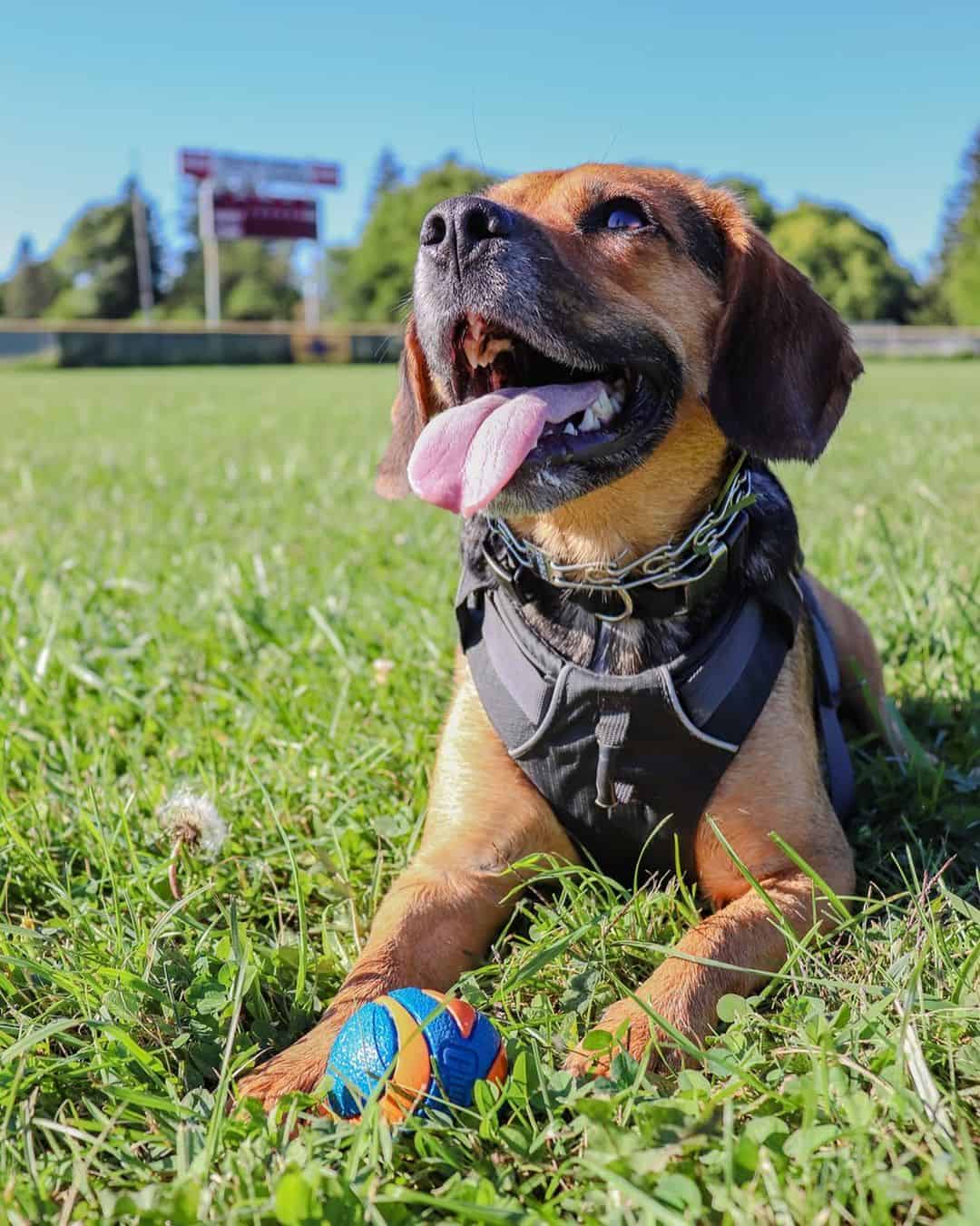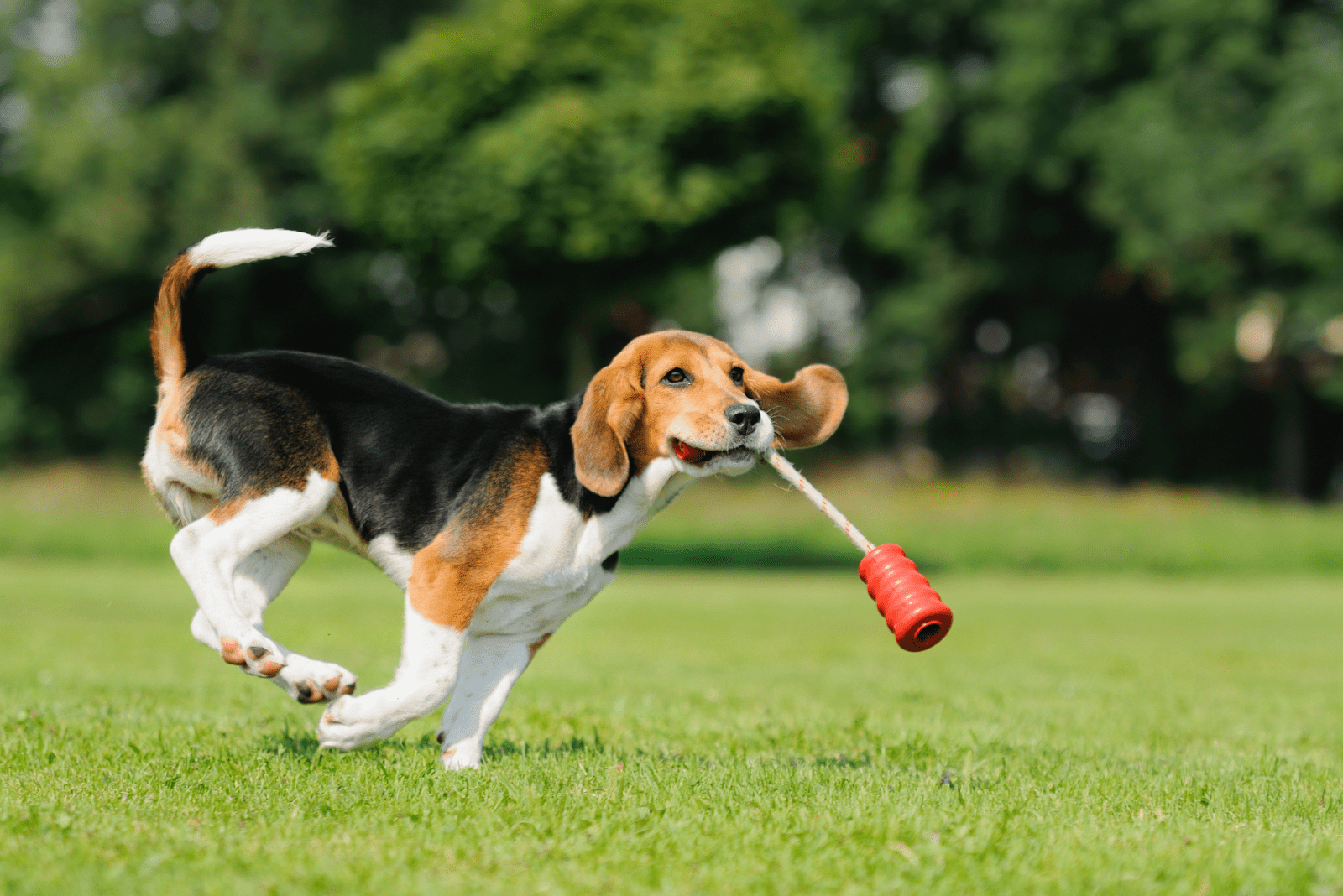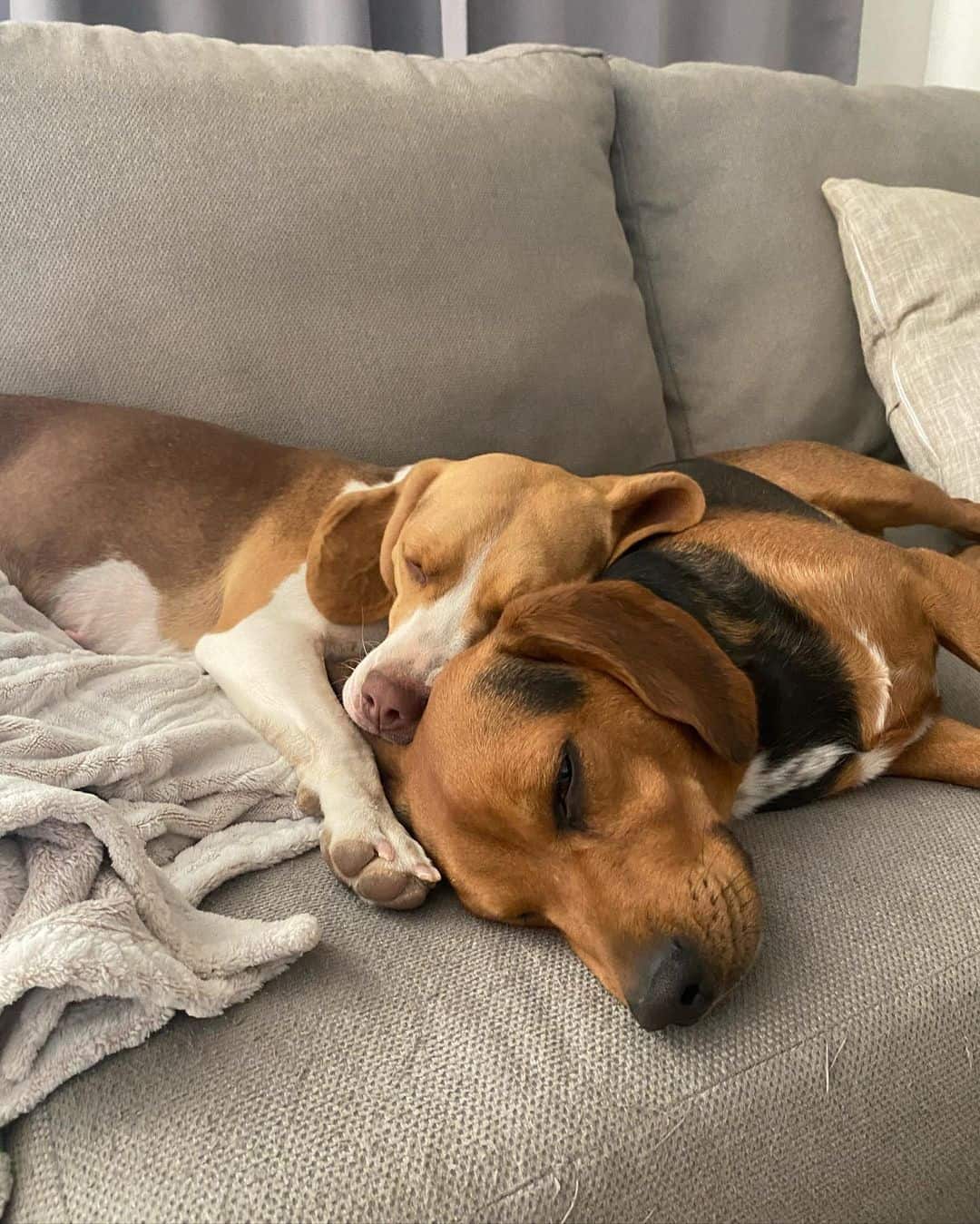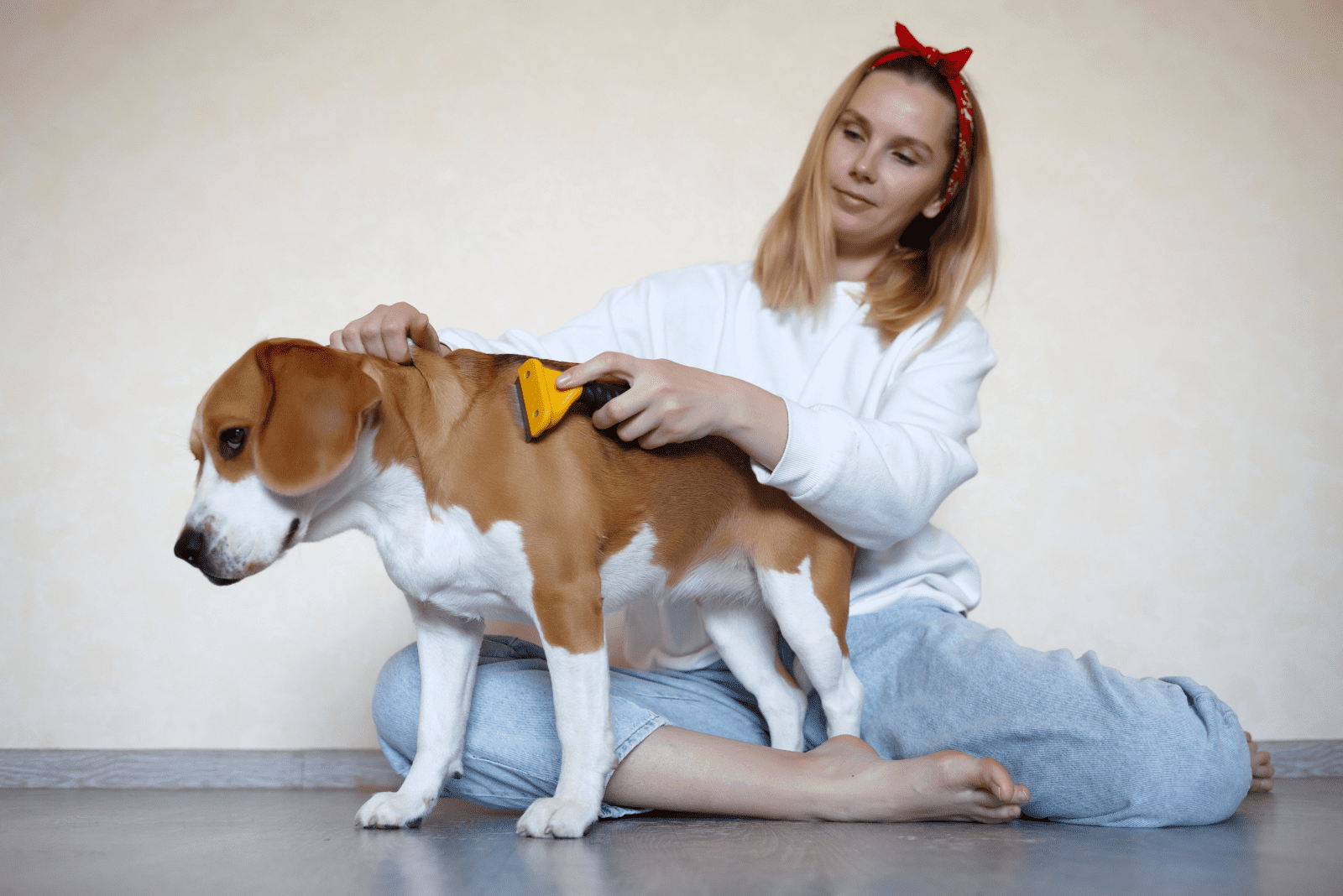It is about that time, finally! We will be discussing a very unique dog breed that captured your heart and soul – the beautiful Beagle dog breed.
When you talk about beagle colors, you might think that there are only three standard colors: black, white, and brown. And, you would be right! These are by far the most common colors for these dogs. They are the “traditional” tri-colored Beagle breed that we all love and adore.
But, if you are a Beagle lover, you probably know that there are more than a few standard colors.
Beagles are typically tricolored. The most common color combination for beagles is black, tan, and white.
Their tail and body are colored black; however, their ears, and head may also have some brown fur and black markings. Their nose, chest, bottom, and legs are mostly white.
Beagles were originally trained to pursue rabbits, foxes, and other animals. This is because of their incredibly strong sense of smell. They are now excellent work and play partners. In many parts of the world, they serve as good and loyal family companions and extremely capable hunters.
This article will show some of the most popular and AKC (American Kennel Club)-recognized Beagle colors as well as some captivating information about them.
Furthermore, we will learn something more about standard colors and various types of color mixtures in this article.
So, let’s get this party started!
Standard Beagle Colors
There are currently many types of Beagle color combinations. The tri-colors are considered a classic: red and black and white, and tan-white and black.
Beagles are multicolored dogs. This leaves us under the impression that beagles with a single solid color are uncommon. At some point, you will also come across beagles with two colors (bicolor), but they are a little bit hard to find, too.
There are also two-tone, and sometimes one-color Beagles, such as white. In Britain, two-colored (bicolor) pets are highly valued because it is considered a sign of good quality.
Bicolor is the phenomenon of combining two colors. This is usually white and the other color varies from red to black, but a black and white Beagle can rarely be seen. These types of Beagles color combinations belong to the standard color combinations: red and white, lemon and white, red with white, and tan white.
The most common and standard color of Beagle hair is tricolor – a color combination of three colors at the same time. Different color combinations consisting of red, black, and white make a purely individual color for each animal, but the only characteristic that remains unchanged by the standard is the white tip of the tail.
1. Black and Tan Beagle

Photo from: @dexter_the_explorer_yul
These canines are predominantly black in color. Even so, the brown or tan coloration may be seen on their bottom, chest, face, legs, ears, and tail. The black color, on the other hand, is definitely dominating, and it covers the body, back, tail, sides, ears, and occasionally, the face.
Fortunately, the AKC and the National Beagle Club recognize the black and tan Beagle.
2. Red And White Beagle

Photo from: @rosiebeaglebrigade
Red and white beagles are a deeper and darker orange color combination than lemon and white beagles. Their colorful patches may already be seen at birth and while they are still Beagle puppies.
Red and white Beagle puppies are born with the colors of an adult mellow lemon. Some breeders refer to their red and white Beagle puppies as lemons, but there is a distinction to be made.
A rusty-colored nose and white markings are common in red and white Beagles.
3. White Beagle

Photo from: @teddybearthelemonbeagle
Purebred Beagles are not entirely white. White beagles will always have a white coat, and markings or ticks of various shades. Some of them can have light-brown or brown markings.
The National Beagle Club states that the original “true hound colors” contain the three standard colors of the Beagle: tan, black, and white. Also, blue-tan and blue tri-color Beagles are recognized by this organization.
While there are many differences between Beagles and Basset Hounds, you’ll notice that colors are not among them! They both have the colors typical for hounds.
When these three colors get mixed with each other, you get something called a pied hound. Pied hounds are almost always tricolor. Regarding the solid colors, they may only be found as white Beagles.
Beagle Color Combinations
Beagles are a hunting dog breed. These dogs were especially developed to have several Beagle colors so that their owner could easily identify them in the forest while hunting. That is why they are bi-colored or tricolored, with markings and ticks of different colors on their coat.
Hound dogs can’t have a single solid color. That can only occur if a dog has albinism, a rare hereditary disorder, which will produce a loss of pigmentation and turn them into a pure white Beagle.
Beagles can be, or can appear to be white for one of two reasons: albinism or a white and lemon color combination.
We will list some of the most unique, interesting, and eye-catching color combinations down below:
1. Black And White Beagle

Photo from: @lexi.and_her.animals
Two or three colored Beagles are often born as bicolor – black and white Beagles. As they grow, their Beagle color may change from black to diluted black or light brown.
By the breed standards, this is considered as the alternative to the traditional tricolor Beagles.
2. Blue Tick Beagle

Photo from: @yogidoghuckleberryhound
This little dog is sociable, playful, intelligent, and kind, with a compact, muscular, and slim physique and a long tail. They are well-behaved and simple to train. They will quickly learn to obey their owner’s demands, and will enjoy fulfilling their wishes. These features make him an excellent candidate for dog shows.
It has a very lovely face, huge, expressive brown eyes, and long, soft, floppy ears, and it would also make an excellent family pet.
A Blue Tick Beagle puppy draws attention due to its unique blue Beagle color, and is said to be a lovely and joyful small dog.
The Blue Tick Beagle is a kind of hound dog that was bred to be used for scent detection, tracking, and hunting.
3. Redtick Beagle

Photo from: @2househounds
It is important to say that this color combination is accepted by the American Kennel Club, and that this dog breed can be used in Beagle dog shows.
4. Red-Black Beagle

This Beagle is slightly easier to find than his single solid-color brothers. The base of its coat is red, with black patches and markings as the secondary color.
5. Chocolate Tri-Color Beagle

Photo from: @kenji_kenda
Brown is the dominant color of a Chocolate Beagle, and white is the next color you’ll come upon. A Beagle puppy’s tan coloring will not develop until the later stages of its life.
Some chocolate tri-color Beagles have a lighter tone that looks light brown or red.
6. Lemon Beagle

Photo from: @derek_yumi
The funny thing about the Lemon Beagle is that its nose and lips will always be dark.
Lemon Beagles were originally bred for hunting because they are classified as scent hounds.
These cuties have a calm attitude, but don’t let them get hungry. That’s the only thing they get upset about!
7. Tan-White Beagle

Photo from: @viennacallingbeagles
They don’t have the classic black color on their back, only tan patches on their white base color. The tan and white Beagle is what you call a classic bi-color Beagle.
8. Lilac Beagle

Photo from: @_thebeaglefamily
This is yet another rare Beagle. Only with the right genes combination will they acquire this unique Beagle color. The lilac color can also be addressed as blue-fawn, but the right term recognized by the AKC is lilac.
Some people search for this unique coloration their whole life! This is because it is an extremely rare type, and they want it because it’s not similar to the others and they want their dog to stand out in the crowd.
Lilac Beagles are great conversation starters. Everyone stops you on the street and asks you about your dog – they want to know how you got it, and to compliment its color shades!
Read More: How Much Does a Beagle Cost?
Are Merle Beagles A Real Thing?

Photo from: @all_american_beagles
If your breeder or another dog owner claims to have bred a merle Beagle, they are most likely not purebred Beagles or else they are misleading you with a Blue Tick Beagle.
In addition, Beagles can be paired with other dog breeds, such as a Dachshund, to produce something similar to the merle pattern.
If you are looking for a Beagle, always do your homework. Especially focus on researching the Beagle’s color combinations. Even though there are many excellent and respectable breeders for this dog breed, it is always a good idea to have your own opinion.
Even though this is beneficial for gene variety, keep in mind that you may not be receiving a purebred dog. You’re probably going to receive a Blue or a Redtick Beagle. The freckle pattern is frequently mistaken for the merle pattern by inexperienced dog owners.
Merle is a Beagle color gene pattern that can occur in any dog breed. This hound color is more frequent in breeds of dogs such as the Australian Shepherd, the German Shepherd, and the Great Dane.
The Merle gene can modify skin pigmentation. It has the ability to convert the Beagle’s solid color into patches. It can also cause the dog’s eyes to become blue like the ocean.
Merle is not a common Beagle color. They can, however, acquire merle genes.
What Is A Pocket Beagle?
Initially bred as hunters, pocket Beagles found their way into homes as beloved family members. Although susceptible to several health conditions as adults, the pocket Beagle requires little equipment. They love to exercise and play, and they behave well around other pets and children.
Pocket Beagles absolutely live up to their name. They grow to be no more than one foot high, and range from seven to twelve inches. They usually weigh between seven and fifteen pounds.
Read More: Beagle Growth Chart
A Pocket Beagle’s coat can have a variety of color combinations such as white, black, brown, cream, tan, orange, or red. Most tails of the pocket Beagle have a white tip, which is useful to hunters as they can see where they are in the high fields of grass.
This breed has a sweet demeanor. They make great animals, and get along quite well with children and other pets. These little dogs appreciate having other pets as friends because they don’t like to be left alone at home.
Beagle Markings
Beagles can be found with different markings, spots, and ticks. The AKC and the National Beagle Club recognize six distinctive markings on the Beagle’s coat. We will list them as follows:
• ticked
• spotted
• black markings
• tan markings
• white markings
• brown markings
Markings are the key factor that gives a Beagle its final shape: a single, solid color, bi-color, or tri-color Beagle.
Ticks are mostly the spots, patterns, and patches on a Beagle’s back, and there are two types of ticks:
• blue ticks
• red ticks
These ticks and markings have almost infinite possibilities of color combinations so it is not uncommon if you say that no two Beagles look alike!
The Beagle Colors, And Coat Maintenance
You must groom and care for your Beagle’s coat, skin, nails, ears, eyes, and teeth on a regular basis in order to maintain his well-being. Grooming a Beagle is also an excellent chance for you and your Beagle puppy or dog to bond, as well as an opportunity for you to check your dog for changes that may require medical attention.
While some Beagles find it difficult to sit still at first, you will discover that with a little patience, this can be a delightful time for you.
Also, because of their short coat, this is not a demanding task. When you get behind on coating care responsibilities, problems generally develop.
According to the National Beagle Club of America, and the American Kennel Club (AKC) , Beagles are wonderful family pets. Because of their minimal care requirements and friendly attitude, they are an excellent dog companion for many households.
Beagles have a larger concentration of odor-producing microorganisms that prefer humid and wet conditions. Their coat absorbs moisture and produces a terrible smell. Although most dogs have that ‘wet dog’ stench, beagles have it the worst.
This is why Beagles should have a bath every four to six weeks – or not, if you don’t mind the smell!
Fascinating Facts About The Beagle Dog Breed

• The beagle is most known for its ability to hunt rabbits, although the species has also been trained to hunt jackals, foxes, and wild pigs.
• A beagle is a small dog breed that descended from a hound.
• Snoopy is the most popular, most famous Beagle in the world. But, you probably already knew that!
• Life expectancy is 12 to 15 years.
• Their sense of smell is over 50 times greater than ours!
• They are also known as “begging look dogs.”
• The majority of animal testing was done using these dogs.
• The white tip on the tail is a sign of a purebred Beagle.
• Obesity is a risk factor.
• Beagles get along better with their peers.
Final Thoughts
We have reached the end of our Beagle colors journey! I hope you learned something new and useful about the many different color combinations. Beagles come in a few standard color mixes, and some other cool variations.
A Beagle’s color and consistency mostly depend on genetics. The most represented colors are combinations of black, white, and tan. Any other color combination that is not a mix of those three colors is considered rare and a bit harder to find.
The Beagle is truly a breed that is special in many ways. It is no coincidence that the famous cartoon hero, Snoopy, was created by this race, which is a symbol of friendship and infinite love for man.
Although you can never give back how much he gives you, try to show him at least a bit of love. He won’t ask for much – just give him your whole heart.















